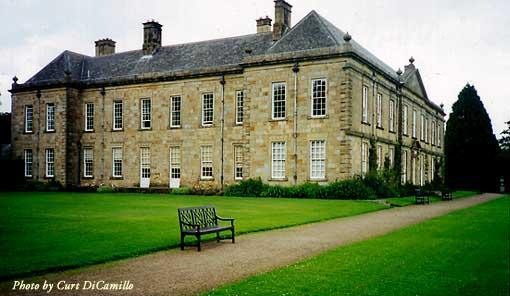
The west and south facades
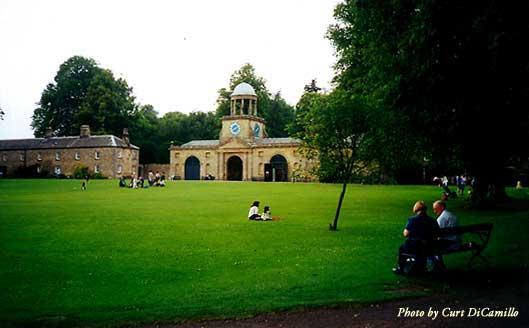
The courtyard with stableblock clock tower
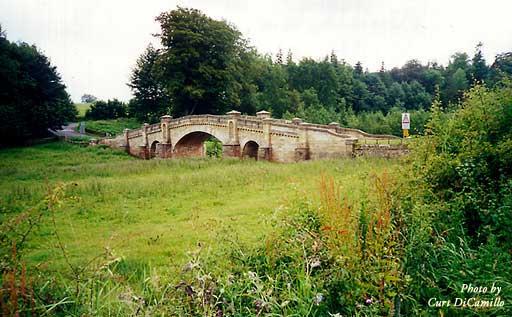
James Paine's Wallington Bridge
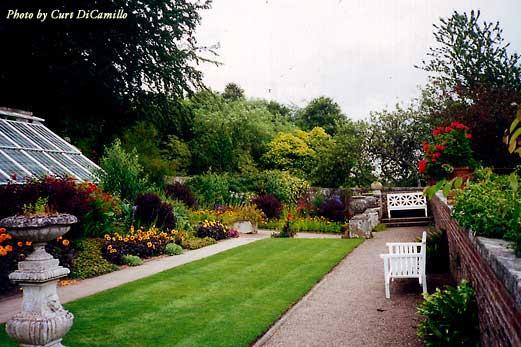
The walled garden
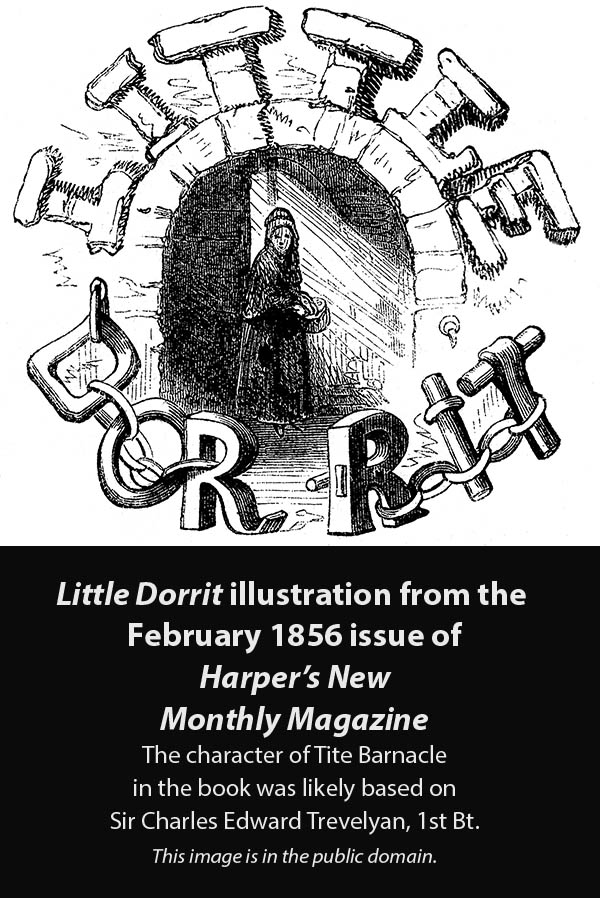
Earlier Houses: There was an earlier house of the Fenwick family on the site of the current house.
Built / Designed For: Sir William Blackett
House & Family History: The Rev. John Trevelyan (1735–1828; in 1757 married Louisa Marianne Simond, daughter of Peter Simond, a London Huguenot merchant) inherited Wallington and seven slave-worked sugar plantations in Grenada through his wife's uncle, who died in 1777; by the early 19th century the family had become one of the largest producers of sugar in Grenada. In 1833, when slavery was abolished in the British Empire, the Trevelyan family received compensation from the British government of £27,000 for the loss of their 1,004 slaves (approximately £23 million in 2019 values using the labour value commodity index). The mixed history of Wallington's owners continues with Sir Charles Edward Trevelyan, 1st Bt. (Trevelyan of Wallington baronets), a man whose character was a Victorian cocktail of reform, arrogance, prejudice, propriety, and a blinding conviction that whatever he believed was right and that everyone else's beliefs were wrong. This was most evident when, while posted in Ireland between 1845 and 1847, he administered the relief works for Great Famine. In this role Trevelyan was slow to disburse government food and money to the Irish due to his strong belief in laissez-faire economics and the free hand of the market. He was also hobbled by his prejudice against the Irish, writing that "the judgement of God sent the calamity to teach the Irish a lesson." In his 1855-57 novel, "Little Dorrit," Charles Dickens very likely based the character of Tite Barnacle, who controls the Circumlocution Office (where everything goes round in circles, and nothing ever gets done), on Trevelyan. Anthony Trollope admitted that Trevelyan was the model for Sir Gregory Hardlines in his 1858 novel, "The Three Clerks." Trevelyan was, however, also a reformer; in 1853 he was one of the authors of the Northcote–Trevelyan Report, which called for a new system to evaluate how people should be hired for government jobs, one based on merit, rather than on aristocratic lineage or family connections. The report became the basis for the modern British Civil Service. At the other end of the political spectrum we have Sir Charles Philips Trevelyan, 3rd Bt., (1870-1958) a noted Liberal and Labour politician. Sir Charles was an opponent of British entry into World War I and resigned from the government in protest when the UK declared war against Germany (he also founded the Union of Democratic Control to oppose the war). In 1939 he was briefly expelled from the Labour Party for his involvement with the Liberal and the Communist Parties and their popular front movement that opposed the government. In 1942 Sir Charles donated the house and the Wallington Estate to the National Trust; this was the first time the trust accepted a country house with its farming estate in lieu of a cash endowment.
Collections: Wallington contains a fine collection of ceramics, paintings, needlework, and dolls' houses. A dish from the imperial treasury of Shah Jahan was possibly taken when the British looted the Qaisar Bagh Palace in Lucknow. Wallington contains some of the finest Rococo plasterwork (by Pietro Lafranchini) in Britain. In 1855 Lady Pauline Trevelyan, on Ruskin's advice, commissioned William Bell Scott to paint a series of eight murals on the history of Northumberland for the covered courtyard at Wallington; they are today probably the artist's most important work. In the early 20th century Wallington was an important cultural center and meeting place of the Pre-Raphaelites.
Garden & Outbuildings: Wallington's 18th century landscape, which sits in 100 acres of parkland, was much influenced by Capability Brown, who went to school in the estate village. At its height in the 19th century, the Wallington Estate stretched to over 11,000 acres.
Architect: James Paine Sr.
Date: 1755Architect: John Dobson
Date: 1853-54Architect: Daniel Garrett
Date: Circa 1735-53John Bernard (J.B.) Burke, published under the title of A Visitation of the Seats and Arms of the Noblemen and Gentlemen of Great Britain and Ireland, among other titles: Vol. I, p. 51, 1852.
Country Life: XLIII, 572, 592, 1918. CXLVII, 854, 922, 986, 1970.
Title: Biographical Dictionary of British Architects, 1600-1840, A - HARDBACK
Author: Colvin, Howard
Year Published: 2008
Reference: pgs. 324, 411, 769
Publisher: New Haven: Yale University Press
ISBN: 9780300125085
Book Type: Hardback
Title: In Trust for the Nation: Paintings from National Trust Houses
Author: Laing, Alastair
Year Published: 1995
Reference: pg. 106
Publisher: London: The National Trust
ISBN: 070801958
Book Type: Softback
House Listed: Grade I
Park Listed: Grade II*
Past Seat / Home of: SEATED AT EARLIER HOUSE: Sir John Fenwick, 3rd Bt., until 1688; Fenwick family here from 1475 until 1688. SEATED AT CURRENT HOUSE: Sir William Blackett, 1st Bt., 1688-1705; Sir William Blackett, 2nd Bt., 1705-28; Sir Walter Calverley-Blackett, 2nd Bt., 1728-77; Blackett family here from 1688 until 1777. The Rev. John Trevelyan, 4th Bt., 1777-1828 (Trevelyan of Nettlecombe baronets); Sir John Trevelyan, 5th Bt., 1828-46; Sir Walter Calverley Trevelyan, 6th Bt., 1846-79; Sir Charles Edward Trevelyan, 1st Bt. (Trevelyan of Wallington baronets), 1879-86; Sir George Otto Trevelyan, 2nd Bt., 1886-1928; Sir Charles Philips Trevelyan, 3rd Bt., 1928-58; Trevelyan family here from 1777 until 1958.
Current Ownership Type: The National Trust
Primary Current Ownership Use: Visitor Attraction
House Open to Public: Yes
Phone: 01670-773-600
Fax: 01670-774-420
Email: [email protected]
Website: https://www.nationaltrust.org.uk
Historic Houses Member: No